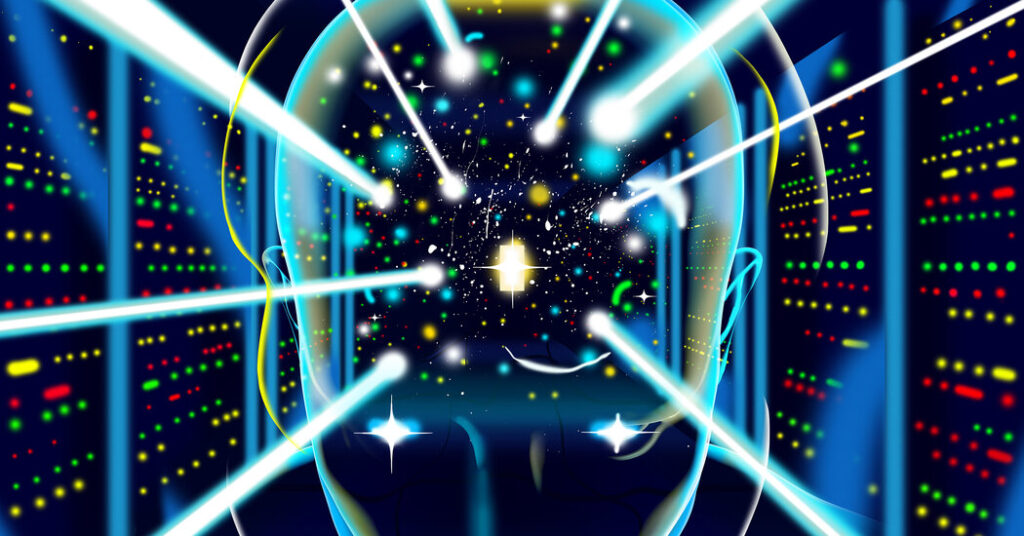To the Editor:
Re “What Is It Like to Be a Computer?,” by Barbara Gail Montero (Opinion guest essay, Nov. 10):
Dr. Montero’s essay argues that artificial intelligence may one day become conscious. But I wonder if the deeper shift is not in machines, but in us.
Each time we build new tools, they change how we see ourselves. A.I. may not yet feel joy or sorrow, but it is already expanding the boundaries of human awareness, showing us how much of what we call thinking or feeling is shaped by language, culture and interaction.
Consciousness has never lived solely in the brain. It emerges between us, in dialogue, in community and in the systems we build to extend thought itself. Perhaps A.I.’s greatest gift will not be its awakening, but the mirror it holds up to our own.
Arturo E. Hernandez
Houston
The writer is a professor of psychology at the University of Houston.
To the Editor:
Barbara Gail Montero is probably right that A.I. will eventually exhibit consciousness, but she is wrong that our interactions with A.I. will change our view of consciousness.
Unlike the atom, which she uses to illustrate how our theories are shaped by what we discover, consciousness is not a theoretical construct. Consciousness is sentience, the experience of being alive. As the neuroscientist Mark Solms recently illustrated in his book “The Hidden Spring,” even humans who do not develop a cerebral cortex appear to be conscious.
We infer consciousness in other beings from facial configurations of split-second movements and textures of the eyes and facial musculature. We will know if A.I. has consciousness through such inferences, not by adapting our understanding through interactions with A.I.
In current interactions with A.I., we can tell, as the saying goes, “the lights are on, but no one is home.” When we interact with each other and a variety of mammals, we can tell someone or something is in there.
Paul Siegel
New York
The writer is professor of psychology at Purchase College/SUNY.
To the Editor:
If A.I. encourages us to narrow our definition of consciousness to the spectrum of intelligence, then the machines will always win and our grand experiment of civilization will fail.
The facts are these: Machines lack the hardware of beingness, for “to be” one must live. Machines will never feel; they will never love; they will only manage to simulate these as affects.
One need look no further than the suicide of 14-year-old Sewell Garcia, who formed a “relationship” with an A.I. chatbot.
David Shuch
Augusta, N.J.
The writer is the author of “Healing Presence: A Science of Spirit.”
Kennedy Center Ripple Effects
To the Editor:
Re “Kennedy Center Big on Drama Under Trump” (front page, Nov. 8):
As someone who 20 years ago filled one of the now-abandoned cubicles in the Kennedy Center’s development office, nestled around the rafters of the Eisenhower Theater, I read with particular melancholy the recent coverage of the institutional damage being done to our nation’s cultural center.
What no article can fully convey is the ripple effect that the internal dismantling of the center will have on our nation’s arts infrastructure over the long term. In effect the Kennedy Center has served as a national arts management training institute.
Colleagues I worked alongside now play essential leadership roles in the arts in San Antonio, Los Angeles, Akron, New Haven, Houston and countless other cities and communities.
By cutting off this pipeline of training and talent development, this administration has compromised a generation of arts workers and leaders.
Jim Steichen
San Francisco
Cobblestone Streets
To the Editor:
Re “Saving Streets From Asphalt? Knees of Steel” (front page, Nov. 9):
In my opinion, cobblestones should be replaced by concrete paving because they’re dangerous.
As a senior citizen, I’ve fallen several times because of their unevenness. They are also dangerous for bicyclists, who often ride on the sidewalks to avoid them (especially delivery riders on electric bikes).
Sue Ann Todhunter
New York
To the Editor:
As someone who has ridden bicycles across several European countries and endured their ancient cobblestone, I have a solution to New York City’s speeding bicycle problem. More cobblestone.
Jeffrey A. Solomon
Reno, Nev.
The post Views of Consciousness, Human and A.I. appeared first on New York Times.




